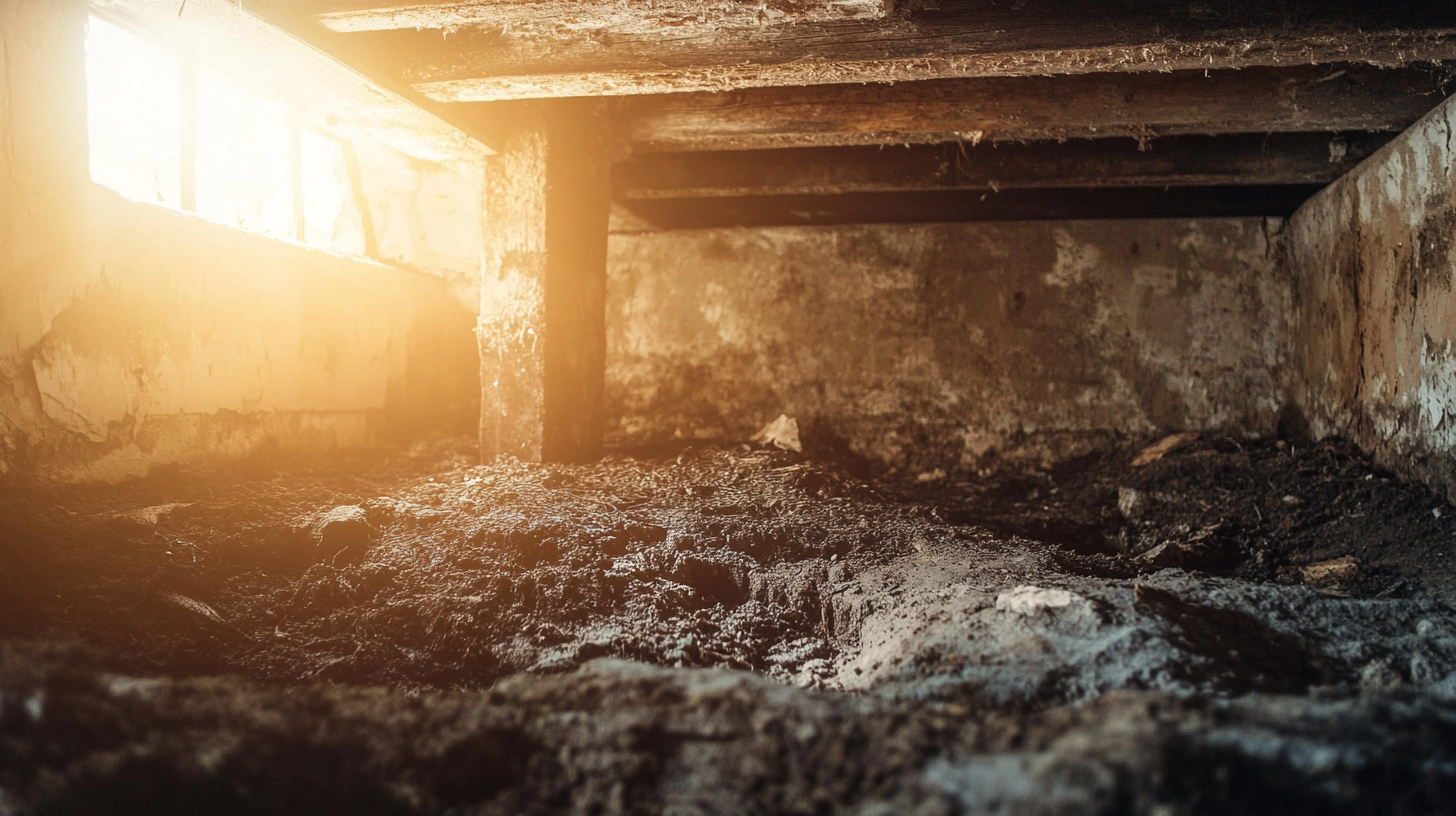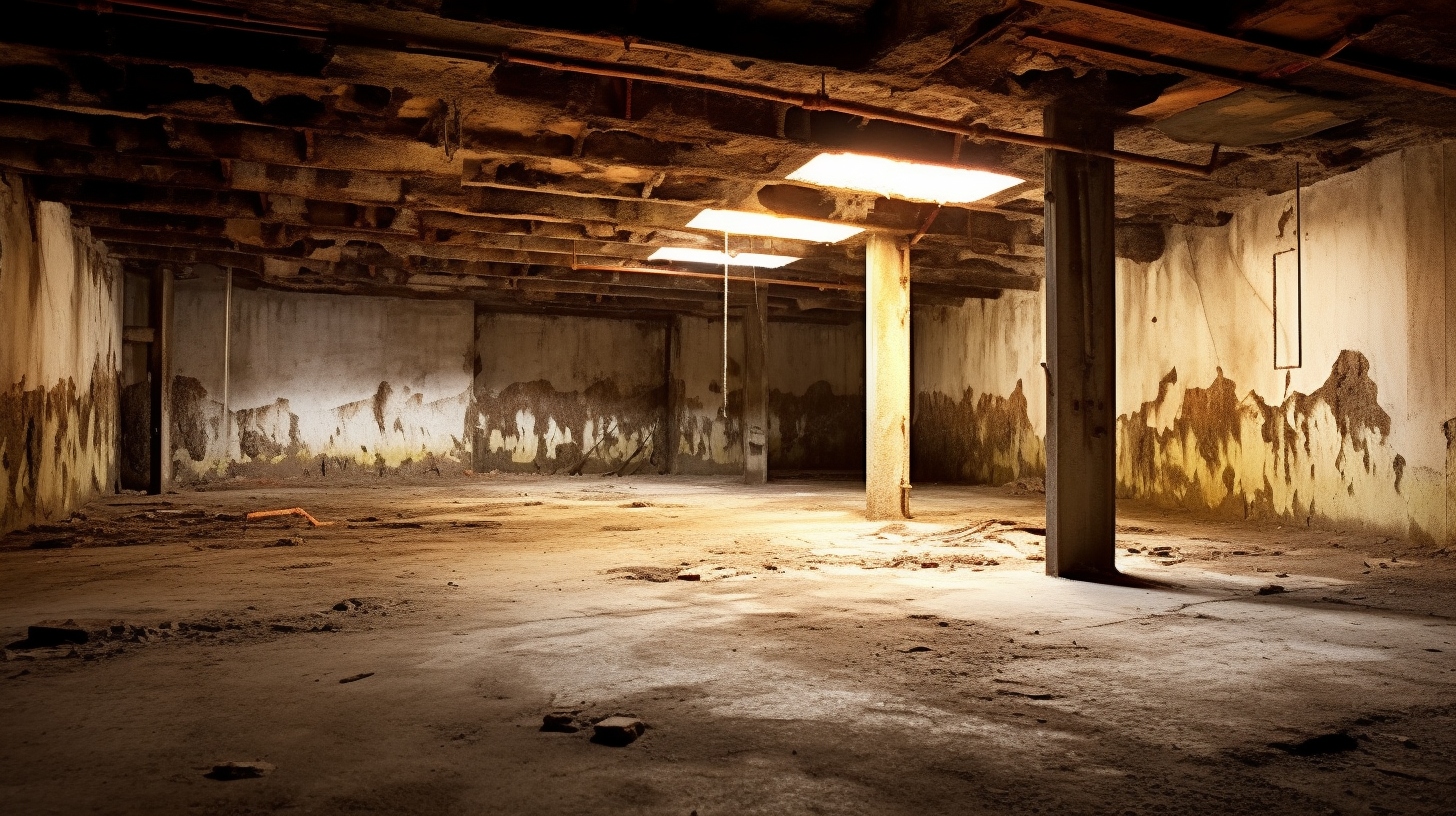Now IS THe Time To...

Crawl Space Services In Knoxville, TN
Stetson Howard: 865-432-6743
CRAWL SPACE ENCAPSULATION, REPAIR, WATERPROOFING & MOLD REMOVAL
No-Obligation, Free Inspections
No-Obligation Free Estimates
We Warranty All of Our Work
100% Satisfaction Guaranteed
Every building begins with a foundation. It's the unseen yet crucial element that supports the entire structure, anchoring it firmly to the ground and providing the stability needed to withstand the forces of nature. The integrity of a foundation is not just a technical requirement but a fundamental aspect that determines the longevity and safety of a building. This blog explores the significance of maintaining a robust foundation, examining how it acts as the linchpin in the overall health of any architectural entity. We will delve into the principles of foundation design, discuss common issues that compromise its strength, and highlight innovative techniques used in modern construction to enhance foundation resilience. Through engaging discussions and insights, this blog aims to connect engineers, architects, and construction enthusiasts with the foundational truths that underscore every successful building project.
Types of Foundation Cracks
Understanding the different types of foundation cracks is crucial in identifying potential issues in a building's structure. These cracks, while often alarming at first sight, vary widely in their implications, ranging from harmless aesthetic issues to serious structural threats.
Hairline Cracks
Hairline cracks are the fine, almost invisible fractures that commonly appear in the concrete foundation of new buildings. These cracks are often no wider than the width of a sewing needle but can span a significant portion of a wall. They typically emerge due to the concrete's natural settling and drying process. While usually not a cause for immediate concern, monitoring their progression is important to ensure they do not widen or multiply, indicating more severe underlying problems.
Shrinkage Cracks
Shrinkage cracks are a normal occurrence in concrete foundations, characterized by their thin, web-like appearance. They occur as the concrete cures and loses moisture, leading to a decrease in volume. Differentiating shrinkage cracks from structural cracks is vital; while the former are generally superficial, the latter may signify deeper, structural issues. Shrinkage cracks are uniform in width and rarely impact the foundation's integrity, whereas structural cracks are irregular, wider, and often accompanied by other signs of foundation failure.
Settlement Cracks
Settlement cracks develop when the ground beneath the foundation shifts or settles unevenly after construction. The uneven distribution of weight causes parts of the foundation to move differently, leading to cracks. Identifying settlement cracks involves looking for diagonal or zigzagging lines that extend through the foundation, often visible on both the interior and exterior of the structure. Evaluating the severity of these cracks can help determine the need for professional intervention to prevent further damage.
Structural Cracks
Structural cracks are serious indicators of potential foundation failure. These cracks are typically wider than 1/4 inch, irregular in pattern, and often accompanied by other signs of structural distress such as doors that won't close or floors that slope. These types of cracks can jeopardize the building's structural integrity and require immediate attention. Ignoring structural cracks can lead to severe consequences, including the risk of partial or complete building collapse.
Causes of Foundation Cracks
Understanding the causes of foundation cracks is essential for diagnosing issues and implementing effective solutions. Various factors, ranging from natural changes in the environment to human errors during construction, can significantly affect the integrity of a building's foundation.
Natural Ground Movements
Natural ground movements, including geological changes and variations in soil conditions, are primary culprits behind many foundation cracks. The earth beneath a structure is not static and can shift due to processes such as soil settlement, erosion, or seismic activity. Such movements can cause the foundation to crack, especially if the soil is not adequately compacted or if it has an uneven moisture content. The impact of seismic activities, such as earthquakes, can create sudden and severe shifts, stressing the foundation beyond its capacity and leading to cracks.
Water Damage and Soil Pressure
Water plays a significant role in foundation integrity. Excessive moisture around a foundation can lead to hydrostatic pressure, which pushes against the foundation walls and can cause cracking. Poor drainage contributes to this problem by allowing water to accumulate around the foundation rather than being directed away from the structure. Implementing effective drainage solutions, such as proper grading, gutters, and downspouts, can help manage water flow and reduce the risk of water-induced soil pressure and foundation damage.
Construction and Material Issues
Errors during the construction phase can lead to foundation issues later on. Common mistakes include improper curing of concrete, inadequate foundation depth or width, and poor soil analysis before construction. Additionally, the use of substandard materials can weaken the foundation, making it more susceptible to cracking under normal stresses. Ensuring quality control and adherence to building codes during construction can significantly reduce the likelihood of such problems.
Environmental and Climatic Factors
The environment and climate in which a building is located also play a significant role in foundation stability. Extreme weather conditions, such as cycles of freezing and thawing, can cause the soil to expand and contract, leading to foundation movement and cracking. Similarly, prolonged dry spells can lead to soil shrinkage, pulling away from the foundation and causing it to shift or crack. Understanding these environmental factors can aid in choosing the right construction techniques and materials that can withstand local climatic conditions.
Risks Associated with Foundation Cracks
While foundation cracks might seem minor, they can signal serious problems and lead to significant risks if not addressed promptly. Understanding these risks not only helps in maintaining the structural integrity of your property but also in preserving its value and ensuring the health of its occupants.
Structural Instability
Untreated foundation cracks can evolve from mere aesthetic concerns to major structural failures. These cracks may start small but can grow and penetrate deeper into the foundation, compromising the building's stability. Signs of escalating problems include widening or lengthening of cracks, doors and windows that no longer close properly, and visible gaps at the junctions of walls and ceilings. These symptoms often indicate that the structural integrity is compromised, requiring immediate professional assessment and intervention to prevent potential collapse or irreparable damage.
Water Intrusion and Mold Growth
Cracks in the foundation can allow water to seep into the interior spaces of a building, leading to moisture accumulation within walls and floors. This moisture can create an ideal environment for mold growth, which poses significant health risks. Mold spores can trigger allergic reactions, respiratory problems, and other health issues, particularly in children, the elderly, and those with pre-existing health conditions. Addressing foundation cracks and ensuring proper waterproofing measures are crucial in preventing water intrusion and protecting the health of building occupants.
Decreased Property Value
The presence of foundation cracks can severely impact the appraisal value and marketability of a property. Potential buyers are often wary of investing in a property with visible foundation issues, fearing future repair costs and the potential for serious underlying problems. For sellers, it is essential to address these foundation issues before placing the property on the market to avoid decreased interest and to command a fair market price. Additionally, repairing foundation cracks can improve the structural health of the property, making it more appealing and secure for prospective buyers.
Diagnosing and Repairing Foundation Cracks
Addressing foundation cracks promptly and effectively is crucial to maintaining the structural integrity and value of your property. Understanding when to seek professional help and what repair options are available can guide you in managing these issues before they escalate into more serious problems.
Professional Assessment and Diagnosis
Knowing when to call a professional for a foundation assessment is key to preventing minor cracks from becoming major structural issues. If you observe cracks that are wider than a quarter-inch, running horizontally, or leaking any type of fluid, it is time to consult a professional. During a professional evaluation, expect the expert to conduct a thorough inspection of both the interior and exterior of your property, measuring the width and depth of cracks, and assessing any potential impacts on the building’s structural integrity. The professional will likely use tools such as levels and laser measures to determine if the foundation has shifted and might also recommend a soil analysis to understand the underlying causes of the foundation movement.
Repair Techniques and Solutions
There are various repair methods available depending on the type, location, and severity of the foundation cracks. For hairline cracks, simple sealing techniques may suffice to prevent water intrusion and further damage. More significant structural cracks may require extensive repairs such as epoxy injections, underpinning with piers to stabilize the foundation, or even complete sections of the foundation may need to be removed and rebuilt. Long-term solutions often involve addressing the root causes of the foundation issues, such as improving drainage around the building, installing moisture barriers, or correcting the slope of the surrounding landscape to ensure water moves away from the foundation. It’s essential to match the repair method to the specific problem to ensure the solution is effective and durable.
Preventative Measures and Maintenance
Maintaining the integrity of your home's foundation is crucial not only for the structure's longevity but also for the safety and comfort of its inhabitants. Proactive maintenance and regular inspections can prevent small issues from becoming major problems. This blog will guide you through the essentials of foundation care, offering practical advice and simple tips that you can implement yourself.
Routine Foundation Inspections
Recommended frequency and scope of home foundation inspections: Experts recommend that homeowners conduct a thorough foundation inspection at least once a year. However, if your area experiences extreme weather changes, more frequent checks may be necessary. During these inspections, look for new or expanding cracks, signs of soil movement away from the foundation, and moisture or pooling water which can indicate drainage issues.
DIY tips for monitoring foundation health: Between professional inspections, there are several things you can do yourself to monitor the health of your foundation. Regularly walk around your home’s exterior to check for visible changes such as cracks in the walls or foundation itself. Inside, look for doors and windows that suddenly begin to stick or floors that seem uneven, as these can be subtle signs of foundation shifts. Keeping a log of these observations can help you or a professional spot trends that may require intervention.
Maintaining a Healthy Foundation
Preventative practices to help maintain foundation integrity: Long-term foundation health is supported by several key practices. Ensure that your home’s downspouts are directing water away from the foundation to prevent erosion and water damage. Consider the installation of a French drain system if water pooling becomes a consistent issue. Additionally, regulate the soil moisture around your home as much as possible to avoid excessive expansion and contraction of the soil, which can put stress on your foundation.
Importance of landscaping, proper drainage, and regular maintenance: Strategic landscaping can greatly enhance your foundation’s health. Use plants that require less water to minimize moisture variation in the soil near your foundation. Slope the landscape away from your home to aid in proper drainage and prevent water accumulation. Regular maintenance, like cleaning your gutters and inspecting your plumbing for leaks, also plays a critical role in preventing undue stress on your foundation.
FAQs
-
What causes foundation cracks?
Foundation cracks can arise from various causes including natural soil movement, water damage, poor construction practices, and environmental changes. Factors like soil type, moisture content, and seismic activity play significant roles in foundation stability, often leading to cracks if the foundation is improperly supported or if the soil expands, contracts, or shifts unevenly.
-
Are all foundation cracks serious?
Not all foundation cracks indicate serious problems. Hairline cracks are common and typically non-structural, caused by the natural curing and settling of concrete. However, wide cracks, horizontal cracks, or cracks accompanied by other signs of foundation movement (like doors that won't close) can signal serious structural issues that might require professional evaluation.
-
How to identify risky foundation cracks?
Risky foundation cracks are often wide (wider than 1/4 inch), horizontal, or presenting a stairstep pattern in block or brick walls. Signs that accompany these cracks, such as sticking doors, uneven floors, and gaps around window frames, also indicate significant structural concerns, suggesting that the foundation's integrity is compromised.
-
Can weather affect foundation integrity?
Yes, weather can significantly impact foundation integrity. Extreme weather conditions, such as heavy rain, flooding, drought, and freeze-thaw cycles, can cause the soil around a foundation to expand and contract. This movement can put stress on the foundation, leading to cracks and other structural damage.
-
How to fix foundation cracks?
Repairing foundation cracks depends on the crack type and severity. Minor, non-structural cracks can often be sealed with epoxy or polyurethane foam injections to prevent water infiltration. Structural cracks may require more extensive repairs such as underpinning, where additional supports are installed beneath the foundation to stabilize and lift the structure, or piers and beams to redistribute the weight. Always consult a structural engineer or foundation repair specialist to determine the most appropriate repair method.
Recent Blog Posts
Crawl Space News



Schedule Your FREE Crawl Space Evaluation!
Did you know YOU DON'T HAVE TO BE HOME for us to provide you with your 100% FREE crawl space inspection and report?
Call Us Today at: 865-432-6743
Forever Guard Crawl Space Encapsulation and Repair of Knoxville is a specialty crawl space waterproofing company that services the greater Knoxville, TN and surrounding areas.
Business Hours
Sunday: 7:00 AM - 7:00 PM
Monday: 7:00 AM - 7:00 PM
Tuesday: 7:00 AM - 7:00 PM
Wednesday: 7:00 AM - 7:00 PM
Thursday: 7:00 AM - 7:00 PM
Friday: 7:00 AM - 7:00 PM
Saturday: 7:00 AM - 7:00 PM
legal info
All Rights Reserved | Forever Guard Crawl Space Encapsulation and Repair of Knoxville




